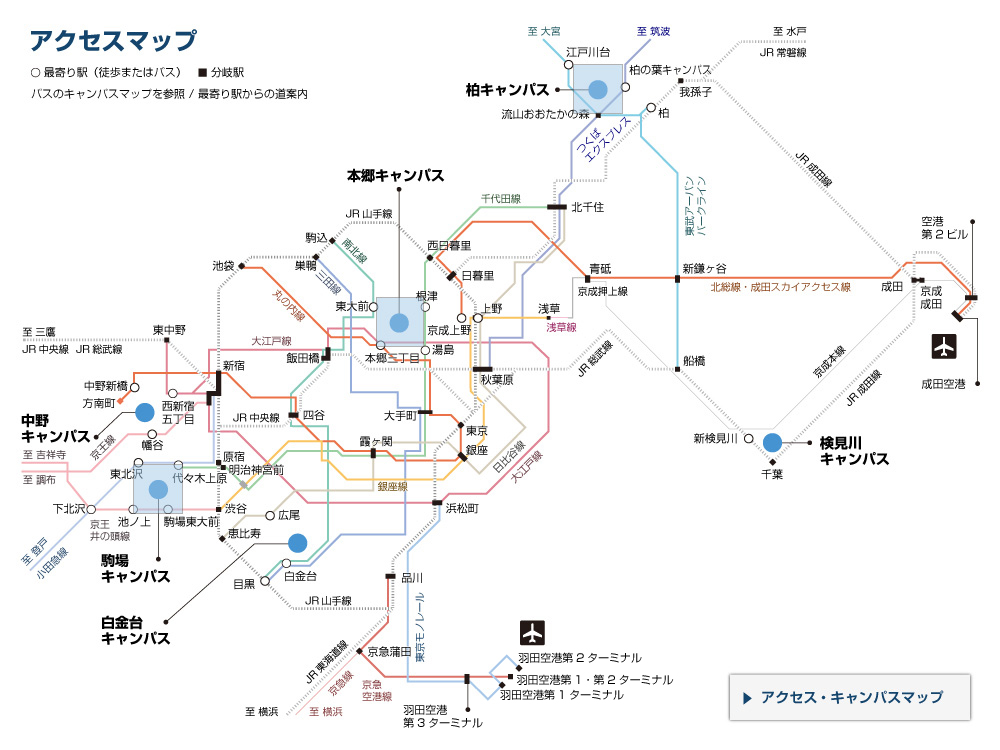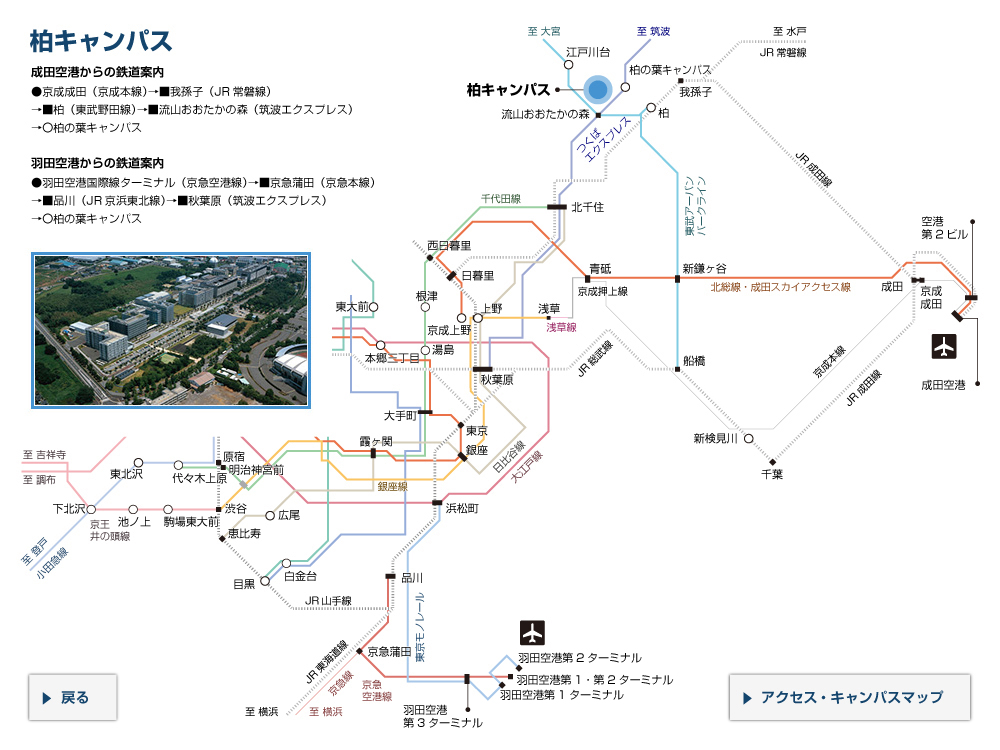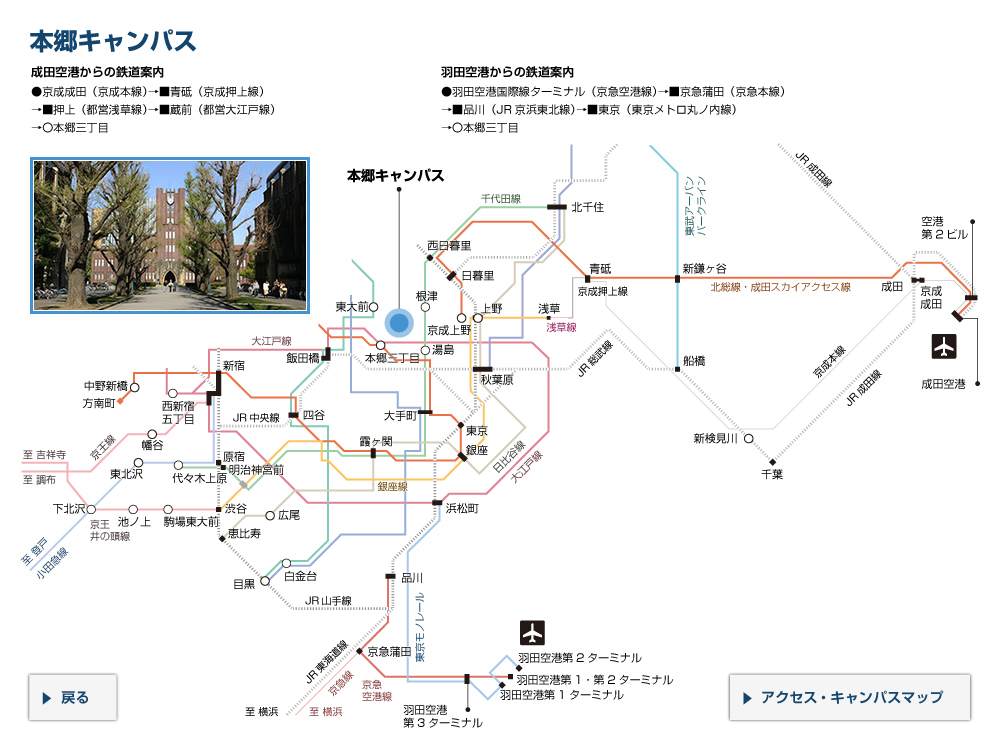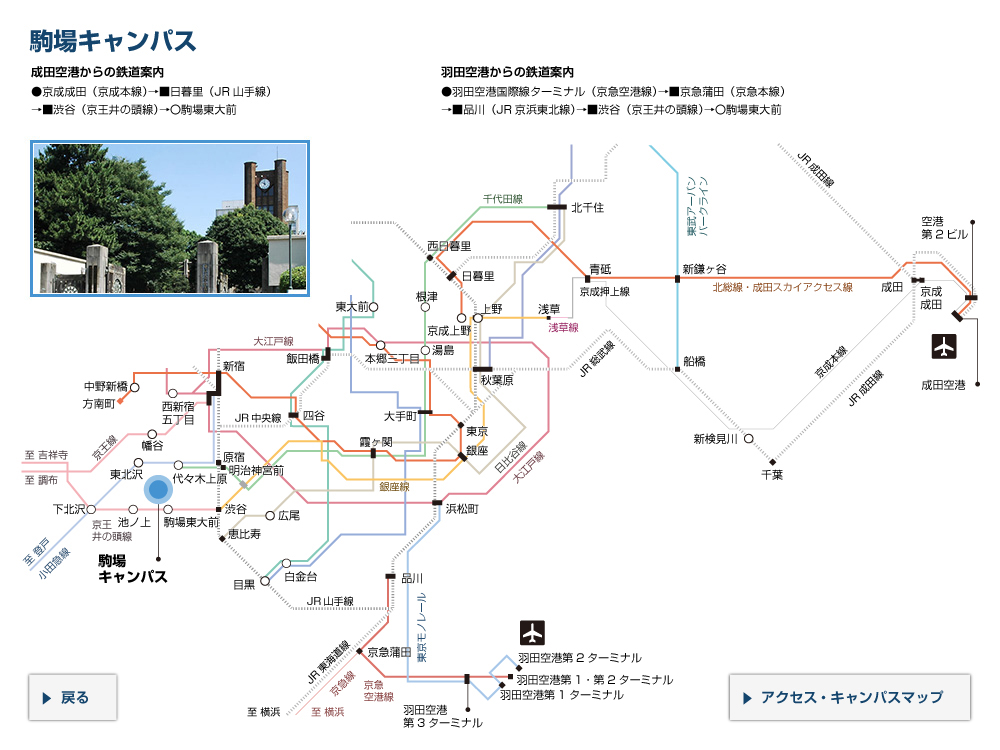令和5年度 東京大学秋季入学式
総長式辞
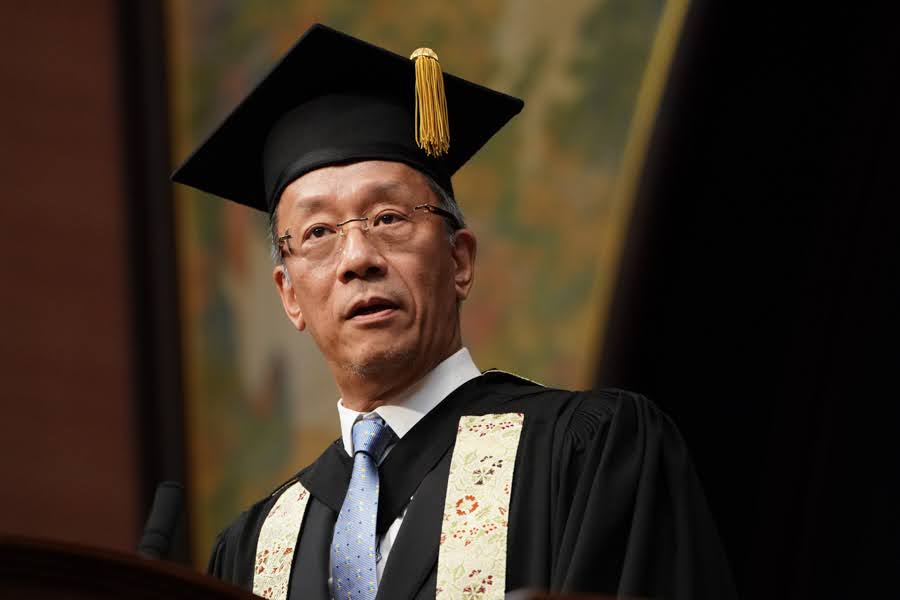

| 式辞・告辞集インデックスへ |
Address by the President of the University of Tokyo
at the 2023 Autumn Semester Matriculation Ceremony
To all of our new students, welcome to the University of Tokyo. On behalf of the entire University, I extend my heartfelt congratulations. As members of the UTokyo community, you will learn and think about many different things. You will interact and sometimes compete with new friends you meet here as you pursue knowledge in your chosen fields.
As some of you may know, this past January Professor Svante Pääbo, Director of the Max Planck Institute for Evolutionary Anthropology in Leipzig, Germany, gave a lecture here in Yasuda Auditorium. Last year, Dr. Pääbo received the Nobel Prize in Physiology or Medicine for his groundbreaking research on the genomes of the extinct Neanderthal and Denisovan hominins and the implications for human evolution. His pioneering work has led to great advances in the new scientific discipline of paleogenomics, with impacts spanning from the natural sciences to the social sciences and humanities.
Using the technology they worked hard to develop over more than 30 years, his research group has been analyzing trace amounts of DNA extracted from ancient human bones and cave deposits dating back hundreds of thousands of years. Their results have given us a much deeper understanding of human origins and our evolutionary history.
For example, analysis of ancient DNA over the past decade has revealed that Neanderthals did not simply go extinct. Rather, over hundreds of thousands of years they repeatedly interbred with Homo sapiens and spread along complex routes across the globe. The research also revealed the existence of another now-extinct hominin species, the Denisovans.
New insights are also emerging about the movement of people in and around the Japanese archipelago. It used to be believed that Japan was home for many millennia to what are called the Jomon people. Then, about two thousand years ago, the Jomon people were joined by the Yayoi people migrating from Asia. However, analysis of ancient DNA has revealed that around six thousand years ago, people in southern Korea already had Jomon-like characteristics that are similar to those of modern Japanese. The conventional story of today’s Japanese being descended from the indigenous Jomon and immigrant Yayoi now has to be revised. Going forward, genome analysis of human bones and other remnants in and around Japan, together with archaeological findings, should give us an even more detailed understanding of human migration in past millennia.
The term “genome” refers to the entire set of genetic information that makes up an organism. The concept originated in the 1920s from the analysis of sets of chromosomes in the reproductive cells of plants. Later, “genome” came to mean the full genetic DNA sequence.
Our genes and DNA are sometimes regarded as mysterious and all-powerful. Some people seem to believe that genetic information determines everything about an individual’s body and personality, and that it controls even what diseases we get. But that is a misunderstanding. Genes are merely blueprints written with letters called bases. The term “blueprint” might conjure an image of a detailed plan listing dimensions and shapes with no empty areas. In fact, however, the portion of our DNA that actually codes proteins—that is, the genes—is extremely small, around just one percent. Initially, the remaining 99 percent of DNA was thought to be useless junk. But as genome research has progressed, it has become clear that those regions contain information that serves as instructions on how to use the genes. We have also learned that decoding only the base sequences of a genome is not enough to understand the complex biological mechanisms.
One of the major milestones in the field of genome research, or even in science as a whole, was the Human Genome Project launched in 1990. The project aimed to decipher the entire sequence of human DNA. With the technology available then, only a few hundred bases could be identified at a time. The goal was to read out all three billion bases, so over one thousand researchers in six countries worked together, making time-consuming and steady progress. After more than a decade and the investment of some three billion dollars, the completion of the first draft sequence was announced in June 2000.
When we think about the nature of that research, it is symbolic that the completion of the first draft was announced at a press conference attended not only by Dr. Francis Collins of the Human Genome Project but also the U.S. president, the British prime minister, and Dr. Craig Venter of Celera Genomics Corporation. Dr. Venter had been affiliated with the Human Genome Project at first, but while the project was still under way he moved to the private sector, where he competed with the project and helped to accelerate the decoding.
At that press conference, President Bill Clinton made an insightful comment. He said, and I quote, “when Galileo discovered he could use the tools of mathematics and mechanics to understand the motion of celestial bodies, he felt, in the words of one eminent researcher, ‘that he had learned the language in which God created the universe.’ ” President Clinton continued, “Today, we are learning the language in which God created life.”
That joint press conference touched on several issues faced by universities today.
The first is the importance of cooperation between the public and private sectors. At the conference, President Clinton also noted that, quote, “robust and healthy competition ... is essential to the progress of science.” While direct government investment in basic research is important, governments must also help universities and industry make long-term research investments themselves. In the Human Genome Project, private sector investment was essential; without it, automated DNA sequencers would probably not have been developed so quickly.
That thinking accords with the basic philosophy of industry-academia co-creation that we are now actively promoting at UTokyo. Our current initiative to encourage endowment-based research programs is an example of efforts by academia to work together with industry and the private sector. We seek to build a foundation for serving the common interests of society and thus make our world a better place for everyone. This is in line with one of the goals stated in UTokyo Compass: to “work hand in hand with society to create an ideal vision for a shared future.”
This past summer, while on a trip to the West Coast of the United States, I had a chance to visit the Monterey Bay Aquarium Research Institute. That institute was founded through private contributions from David Packard, one of the founders of the Hewlett-Packard Company. It has been the birthplace of many technological innovations, including a system called the ESP, or Environmental Sample Processor, for automatically collecting DNA samples from the ocean. One unique feature of the institute is its commitment to sharing the observations and imagery obtained through their cutting-edge technology directly with the public, through exhibitions at the aquarium and other means.
Their initiatives embody the same principle we advocate in UTokyo Compass of building “a virtuous circle of confidence and support.” This illustrates how academic research institutions can leverage support from the private sector to expand their activities, share their achievements with the public, and broaden their support to attract further backing for future endeavors.
Another important lesson from the Human Genome Project is what is made possible by data accumulation and open access. The availability of the genome data to the public encouraged the development of the next generation of high-speed sequencers. That resulted, twenty-two years later, in a more complete decoding of the human genome. It became possible for many more scientists to use genomic information in their research. Medical research has made particularly remarkable progress. Utilizing the draft human genome sequence and the more advanced and widely adopted sequencing technology, it is now possible to decipher an individual’s genome sequence within a matter of days for less than 100,000 yen. This enables many applications not only in medicine, but in many other fields as well.
The Human Genome Project thus began with the exploration of uncharted territory and the drawing of rough maps through it. Eventually the roads were paved, making further exploration easier for those who came later.
Perhaps the most striking recent manifestation of the impact of open data access has been the development of vaccines against COVID-19. A group of scientists from China and Australia published the RNA sequence of SARS-CoV-2 in a public database on January 11, 2020. It was at the very start of the pandemic. That open data enabled vaccine development to begin simultaneously around the world. Before the end of the year 2020, several vaccines were already being used. And not only vaccine development was expedited by the open data; it also became possible to respond more quickly to emerging variants of the virus. Recent moves to do more data-driven research and to provide open access to research findings will help promote research in many areas.
At that press conference for the Human Genome Project in the year 2000, several people mentioned their concerns about the ethical and spiritual dimensions of the research. Those matters cannot be addressed by science alone, and that is the third issue I want to mention today. When studying the human genome, we must keep in mind issues such as the protection of privacy and the risk that genetic information might be used to stigmatize or discriminate against individuals or groups.
Analyses of the differences in DNA sequences on a genomic scale seem to show that different groups have distinct clusters of phenotypic expressions. However, those analyses also reveal that genetic variation within any one group is greater than the differences between groups. For example, if we compare the gene sequences of Japanese people in Tokyo and Yoruba people in Nigeria, the individual Japanese vary from each other, and the individual Yoruba are different from each other, more than the Japanese as a whole differ from the Yoruba as a whole. In discussions of human evolution in the last couple of centuries and even today, the term “race” has often been used to classify people based on their phenotypic and genetic traits such as physique and appearance. However, the notion of “race” is problematic not only ideologically; it also has a very weak basis in biology.
Meanwhile, genomic analysis of many individual people has made clearer the details of the genetic variation among us. The decoded sequence from the Human Genome Project is called a “reference” sequence, precisely because there is no single “normal” sequence. Rather, human gene sequences contain much diversity. Such variations in gene sequences are called polymorphisms, and they contribute to phenotypic diversity in traits like facial resemblance and alcohol tolerance within families.
Our clearer understanding of genetic diversity today highlights the fact that each and every one of us is a distinct, unique being. And it is precisely because humans perceive, think, and develop differently that we have come up with various ways to understand and coexist with others.
A related concept that has gained attention recently is neurodiversity. The study of neurodiversity respects differences in people’s brains and neural functions, and it regards specific neural conditions not as illnesses or disabilities but as individual traits. The goal of this approach is to create a more inclusive society. Here at UTokyo, Professor Yukie Nagai leads a research group in the Institute for AI and Beyond that is developing systems to allow anyone to perceive the world as experienced by people on the autism spectrum. The research is deepening our understanding of cognitive individuality and neurodiversity. That institute, by the way, is a collaboration between academia and industry led by UTokyo and the company SoftBank.
So, what lessons does the research on genomics suggest for your studies and research in the years ahead here at UTokyo?
Usually, research starts with wondering “why?” To answer that question, you formulate a hypothesis, you organize and analyze your observations and data, and you derive results. In genome research, however, the rapid advances in technology reversed that process. Rather than doing analyses to answer questions they already had, researchers first collected the data, and out of that data emerged hypotheses for further research. It was this data-driven approach that has led to so many unexpected discoveries.
But because data-driven approaches have become increasingly prominent and important, we must remember that data alone cannot provide insights into the complexity and wonders of existence. Human inspiration remains indispensable. At that joint press conference, Dr. Venter responded to objections that “genome sequencing is an example of sterilizing reductionism that will rob” us of our inspiration. Rather, he said, and I quote, “The complexities and wonder of how the inanimate chemicals that are our genetic code give rise to the imponderables of the human spirit should keep poets and philosophers inspired for the millenniums.”
New technologies can radically transform society. That was the case with stone and iron tools, with the compass, gunpowder, and movable type, and the same may be true with the Internet and artificial intelligence. To create a better society, we must think about the best ways to use those transforming technologies. Right now, there is much debate over the use of generative AI. But those discussions should not be limited to questioning the value of these new tools based on how they can be used now. Rather, we need to discuss in depth and across disciplinary boundaries what significance the new technology might hold for our planet and for human society.
At UTokyo, that perspective resonates with our emphasis throughout the university on education on E-L-S-I; that is, Ethical, Legal, and Social Issues. It also aligns with the widely advocated principle of R-R-I, or Responsible Research and Innovation. R-R-I refers to the approach of first clarifying what kind of society we want and what values we should pursue. We then identify the challenges faced by our society today, and we adapt and pursue our research toward the innovation and technological development needed to meet those challenges.
I encourage all of you entering UTokyo today to believe in your potential. While you stand on the shoulders of giants and apply the wisdom of those who came before, please also question the assumptions that might confine your thinking. Do not only pursue mainstream research that everyone else is working on, but also venture into niche areas that you find intriguing. I myself have spent nearly 30 years working on microfluidics, an interdisciplinary field at the intersection of physics, chemistry, and the life sciences. It used to be that an international conference on microfluidics would attract only a hundred or so participants. Now, though, such conferences bring together over a thousand researchers, offering them a stimulating experience and exposing them to many new ideas.
And please believe not just in your own potential but also in that of others. Your experience and your research at this university will become so much richer when you discuss topics from various perspectives with friends from many different fields. The success of the Human Genome Project was made possible by dividing up the work among international teams. Furthermore, in the two decades since that project ended, research methods have become much more diverse. Expertise in only one field is no longer enough for cutting-edge research. Now that information spreads so quickly, new research techniques can be adopted by anyone. If you can’t use some technique yourself, you can collaborate with others who can use it. Always keep in mind the broader connections that underlie your own specialty, that make your collaborations more interesting and enjoyable. Reframing problems from different perspectives will reveal hints for new answers. In my own research field, I have seen a tremendous increase in the number of people brought together through similar interests. I hope that all of you will also feel the excitement of interacting with many other people.
So, congratulations once again on your admission to the University of Tokyo. I look forward to seeing you all lead fulfilling lives as members of our academic community. And remember: believe in your own potential, respect the diverse perspectives of the people around you, and make dialogue the centerpiece of your exciting journey of exploration.
Thank you all very much.
FUJII Teruo
President
The University of Tokyo
October 2, 2023
(和文)令和5年度 東京大学秋季入学式 総長式辞
新入生のみなさん、ご入学おめでとうございます。東京大学を代表して、心よりお祝いを申し上げます。みなさんはこれから東京大学の一員として、さまざまなことを学び、考え、ここで新たに出会う友と語り合い、ときに競い合いながら、それぞれが目指そうとする分野の知の探究に取り組むことになります。
今年の1月、ここ安田講堂でドイツのLeipzigにあるMax Planck Institute for Evolutionary Anthropologyの所長であるSvante Pääbo教授が講演されたことを、みなさんはご存じでしたか。ネアンデルタール人(Neanderthal)やデニソワ人(Denisovan)のゲノム解析を通じてヒトの進化の一端を明らかにした成果によって2022年のノーベル生理学・医学賞を受賞され、その一連の画期的な研究成果は、古代ゲノム学(paleogenomics)という新しい学問分野を大きく発展させました。それは自然科学だけでなく社会科学・人文科学まで広がる領域の開拓でした。
彼らのグループは、30年以上にわたる技術開発の努力を通じて、何十万年も前の人骨や洞窟堆積物から抽出したわずかなDNAを解析することで、人類の起源や進化の経路をより深く知ることを可能にしました。
たとえば、この10年の古代DNAの分析によって、ネアンデルタール人はただ絶滅したのではなく、ホモサピエンスと数十万年にわたって交雑を繰り返し、世界の各地に複雑な経路で拡がっていったことや、デニソワ人という絶滅したヒト種(extinct hominins)が存在したことなどが導き出されました。
日本列島の周辺の集団の移動に関しても、新たな洞察が生まれつつあります。これまでは、日本には古くから縄文人と呼ばれる人々が住んでいて、約2000年前、そこにアジアから移住してきた弥生人が加わったと考えられていました。しかし、古代DNAの解析によって、6000年ほど前には朝鮮半島南部にいた集団が現代の日本人と同様の縄文的要素を有していたことがわかってきています。つまり、日本列島には在来の縄文人と渡来してきた弥生人がいたという、これまでの単純な図式による理解は、大きく修正されなければならないのです。今後、弥生時代から古墳時代に至る日本列島周辺における人骨等のゲノム解析が進めば、考古学的な成果とあいまって、集団の移動に関するより詳細な理解がなされるものと思います。
「ゲノム(genome)」とは、その生物を構成する遺伝情報の総体を指す概念です。1920年代に植物の生殖細胞に含まれる全染色体を表す言葉として提起され、やがてDNAの全塩基配列の意味で使われるようになります。
遺伝子やDNAというと、それによって「個人の体質や性格のすべてを規定するものである」とか「かかる病気があらかじめ決定されている」など、人知を超えた決定因子であるかのように、今でもしばしば誤解されています。しかしながら、「遺伝子」とはいわば塩基という文字で書かれた「設計図」にすぎません。しかも「設計図」というと、つくるべきものの形状や寸法がびっしりと隙間なく並んでいるかのようにイメージするかもしれませんが、実際に遺伝子としてタンパク質をコードしている部分はごくわずか、1%程度であることが知られています。それ以外の99%の領域については、当初は役に立たない「がらくた(junk)」であると考えられていました。しかし、ゲノム研究が進むにつれ、この領域には遺伝子の「使い方」ともいうべき情報が書き込まれていることなどが明らかになります。その一方で、複雑な生命活動の理解のためには、ゲノムの塩基配列解読だけでは不十分であることもわかってきました。
さて、ゲノム研究の分野においてマイルストーンとなった重要なプロジェクトは、1990年に開始されたヒトDNAの全塩基配列を解読する「Human Genome Project」でした。当時の技術ではDNA配列を数百塩基ずつしか知ることができませんでした。30億塩基を解読するゴールに向けて、少しずつ読み進めていく膨大な作業には、6カ国、1000名以上の研究者が参加しました。10年以上の年月とおよそ30億ドルの資金が投入され、2000年6月に最初のドラフトシーケンスの解読完了がアナウンスされました。
その共同会見に、アメリカ大統領とイギリス首相に加えて、Human Genome ProjectのFrancis Collins博士と一緒に、プロジェクトの途中から民間に転じて競争相手となり解読を加速したCelera GenomicsのCraig Venter博士が同席したのは、この研究の特質を考えるうえで、たいへん象徴的でした。その会見において、かつて400年前にガリレオが新しい望遠鏡と「数学(mathematics)」と「力学(mechanics)」を使いこなして天体の運動を読み、「神が宇宙を創造した言語を学んだ」のと同じように、いま私たちはゲノムの解読において「神が生命を創造した言語を学んでいる」と、クリントン米大統領が述べたのを印象深く憶えています。
この共同会見は、いくつかの意味で、現代の大学もまた向かい合っている大きな課題に触れています。
その第一が、Public-Private Cooperationの重要性です。科学の進歩に必要な「強固で健全な競争 robust and healthy competition」のためにも、官民公私の協力(Public-Private Cooperation)は重要であり、国の基礎研究への継続的な投資に加えて、大学や企業が研究に長期的な投資ができるよう、政府は支援しなければならないと述べています。実際、このプロジェクトにおいて民間部門の投資が果たした役割は大きく、それがなかったならば自動DNAシーケンサの開発は進まなかったでしょう。
近年、東京大学が推し進めている産学協創の基本的な理念も、こうした考え方の延長上にあります。現在準備を進めているエンダウメントベースの研究の展開についても、社会をよくする、すなわち社会共通の利益に資する基盤を創る取り組みを産業界あるいは民間部門と大学とが一緒になって進めようとするものであり、UTokyo Compassで示した「対話を通じてあるべき未来像を社会とともに創り上げる」方向にも沿うものです。
ちょうどこの夏に米国西海岸へ出張し、Monterey Bay Aquarium Research Instituteに立ち寄りました。この研究所は、みなさんご存じのHewlett Packardの創設者の一人であるDavid Packard氏が私財を投じ、たとえば海洋からDNAサンプルを自動採取するシステムの開発など、数々のイノベーティブな技術開発を生み出します。また、そうした最新のテクノロジーによって得られた観測結果や映像を、水族館での展示等を通じて、直接市民に伝えることにも力を入れているところが大変ユニークです。
この取り組みはまさに、学術的な研究機関が民間部門からの支援を受けて、自らの活動を拡大し、その成果を市民に伝え、広く支持を得ることを通して、次なる支援につなげていく、というUTokyo Compassで述べている「信頼と支持・支援の好循環を形成」することにほかなりません。
第二に重要なのは、データの蓄積とオープンアクセスが拓く可能性です。ゲノムのデータが公開され誰でもアクセスできるようになったことにより、その22年後のヒトゲノム配列の「完全」解読につながる次世代シーケンサによる高速シーケンスも可能となり、また多くの科学者がゲノム情報に基づく研究、特に病気に関わる研究を進めることができるようになりました。ヒトゲノムのドラフトシーケンスを活用しながら、この技術の普及とさらなる開発が進められ、いまでは数日以内に10万円未満で個々人のゲノム配列が解読できるようになっています。これにより、医療目的はもちろんのことですが、さまざまな応用展開が考えられるようになりました。未開の地が切り拓かれ、まずは大まかな地図ができ、舗装道路が創られていったおかげで、後続の人たちは歩きやすくなったのです。
こうしたデータへのオープンデータアクセスの効果が近年もっとも顕著なかたちで現れたのが、新型コロナウイルスのワクチン開発でしょう。今回のパンデミックにおいては、SARS-CoV-2のRNA配列が中国やオーストラリアの科学者たちの努力で、2020年1月には公開データベースに発表され、ワクチン開発が世界中で一斉にスタートし、2020年中には複数のワクチンが実用化されました。迅速なワクチンの開発だけでなく、出現した変異株への対応も可能にしています。データ駆動型で多くの研究が行なえるようになった現在、研究成果を速やかにオープンアクセスにすることは、他の研究への寄与、という観点からも大きく期待されるところです。
第三に、共同会見でも複数の参加者から懸念が表明されたように、科学だけでは対応することができない倫理的・精神的な地平の問題があります。とりわけプライバシー保護の観点や、遺伝情報が個人や集団に対して烙印を押したり差別したりするために使われてしまう恐れがある、という問題を見逃すことはできません。
DNA配列の違いをゲノムのスケールで分析してみると、たしかにそれぞれの集団の特質は、個々にまとまった表現形をもっているようにみえます。しかしながら、同じ集団のなかに見られる遺伝子の変異のほうが、他の集団とのあいだの違いより大きいことも、同時に明らかになりました。たとえば、東京に住む日本人とナイジェリアのヨルバ人の遺伝子配列をみると、集団としての差異よりも、同じ集団のなかの二人の個人差のほうが大きいのです。それは、体格や外見等の形質的・遺伝的な特質を手がかりに、進化論的な文脈でここ2、3世紀にかけて日常的にも使われ、今も実は根強く残っている「人種」という区分が、思想として誤っていただけでなく、生物学的な事実としても根拠薄弱であることを示すものでした。
その一方で、多くのヒトの個体が解析された結果、ゲノムの塩基配列の個体差について、より詳しいことが明らかになりました。ヒトゲノムプロジェクトで解読された配列は「参照(リファレンス)配列」と呼ばれますが、これはヒトの遺伝子配列には多様性があるため、「正常な遺伝子配列」という考え方が十分でも適切でもないからです。こうした遺伝子配列の違いは多型(Polymorphism)と呼ばれ、家族で顔が似ている、お酒に強い・弱いなどの体質の差異など、個体の形質に多様性をもたらしています。
遺伝的な多様性の明確化は、私たちひとりひとりが異なり、ユニークな存在であるという事実を再認識させます。そして、ヒトはそれぞれ違う感じ方、考え方、そして発達の仕方をするからこそ、他者を理解しようと努力し、ともに生きるためのさまざまな工夫を生み出してきたのです。近年重視されている概念に「ニューロダイバーシティ」という考え方があります。これは人びとの脳や神経機能が異なるものであることを尊重し、特定の神経状態を病気や障害としてではなく、個人の特性と認識することで、より包括的な社会をつくろうとする考え方です。本学でもソフトバンクとの産学協創として進めているBeyond AI研究推進機構において、長井志江先生たちのグループが自閉スペクトラム症の人々が見ている世界を体験するシステムを用いて、認知個性そしてニューロダイバーシティへの理解を深めようとする研究を進めています。
ここまで取り上げてきたゲノム研究の話題は、みなさんがこれから大学で学び、研究を進めるにあたり、どのような教訓を示唆しているのでしょうか。
基本的に、研究の出発点はあなた自身の「なぜ」という疑問です。その疑問の答を見つけるための仮説、すなわち仮の説明を自分で創り出す過程を経て、観察とデータ分析を計画しその答えを導き出します。しかし、ゲノム研究の領域では急速な技術の進歩により、「まず解析を行い、結果をもとに理解を深める」という順序で研究の過程と結果が逆転し、結果から仮説を導く研究が中心となりました。そうすることで、今まで見逃されていた意外な発見が相次いだことも事実です。
一方で、このような「data driven」のアプローチが盛んになり、重要性を増しているからこそ、データからだけでわからない、存在の複雑さや不思議さへの洞察が大切であり、人間のインスピレーションが不可欠であることを忘れてはならないのです。共同会見においてVenter博士もまた、ゲノム解読は不毛な還元主義であり人間たちからインスピレーションを奪ってしまう、という議論に対し、「命のない化学物質としての遺伝子記号が、人間精神の測りしれない深遠さをいかにして生み出すのか、その複雑さと不思議さは詩人や哲学者を千年にわたって鼓舞し続けるはずである。」と述べています。
新しい技術は、社会を大きく変えます。石器・鉄器を使うことも、羅針盤、火薬、活版印刷などの技術もそうであったし、インターネットも、AIもそうでしょう。社会をよりよいものに発展させるには、技術を使いこなしながらも「どう活用するのが望ましいか」の視点が必要です。今しきりに生成AIの使用の是非が問われていますが、現在の使われ方を前提にその手段としての価値を問うのではなく、この技術は地球と人類社会にとって、どのような意味を持ちうるかという大きな問いが、学問の垣根をこえて議論されなければならないでしょう。
この考え方は、東京大学全体で力を入れているELSI(Ethical Legal and Social Issues)に関わる研究倫理教育とも呼応し、近年幅広い領域で唱えられている、Responsible Research and Innovation(責任ある研究・イノベーション)の理念とも共鳴するものです。RRIとは、望ましい社会像や目指すべき価値をまず明確化し、そこから現在の社会が直面している課題を洗い出し、その解決に必要な技術開発やイノベーションに取り組む研究そのものを、そうした社会像や価値(観)に合致したより好ましいものへと変革しつつ発展させていく考え方を指します。
入学生のみなさん、自分の可能性を信じましょう。巨人の肩の上に乗り、先人の知恵を受けとって活用しつつも、自分の思考を縛っている常識を疑いましょう。他の人たちがこぞってやっているようなメインストリームの研究ばかりではなく、自分が興味をもった分野であれば、隙間の研究にもぜひ取り組んでください。私自身もMicrofluidicsという物理と化学、そして生命科学(Life Sciences)が交叉する領域の研究を30年近く続けてきましたが、当初は100名ほどしか参加者のいなかった国際会議が、今では1000名を超える参加者を集めるようになり、常に新しいトピックに出会い、刺激的な時間を過ごすことができています。
自分の可能性だけでなく、他人の可能性を認め、同じテーマにさまざまな視点から切り込む多様な友たちと議論することも、大学での経験や研究を豊かにするでしょう。ヒトゲノムプロジェクトは国際的なチームの分担作業において成功しましたが、その20年前に比べ、学問の手法は極めて多元化しており、そもそも単独の専門性のみでは最先端の研究ができなくなってきています。情報の流通が速くなった現在では、新たな技術はすぐに自分で使えるようになります。自分で使えなければ、それを専門とする研究者とコラボレーションすることもできます。そうした他者との協働が、面白く楽しいものであるためには、自分の専門とする事象だけでなく、その根底にある大きな連関を見落とさないようにしてください。そこから見直すことで、新たな問題解決の糸口が見つかるかもしれません。また同時に、私も自分自身の研究分野で、同じ興味関心でつながる人の数が飛躍的に増加していくさまを目の当たりにしましたが、未知の多様な人びととの関わりが、みなさんの前にも開かれていることを願っています。
入学まことにおめでとうございます。みなさんが東京大学の仲間として、充実した学生生活を送ってくださることを期待しています。自分の可能性を信じ、周囲の多様な考えを尊重し、対話を大事にしながら探究の歩みを進めてください。
令和5(2023)年10月2日
東京大学総長
藤井 輝夫
- カテゴリナビ



